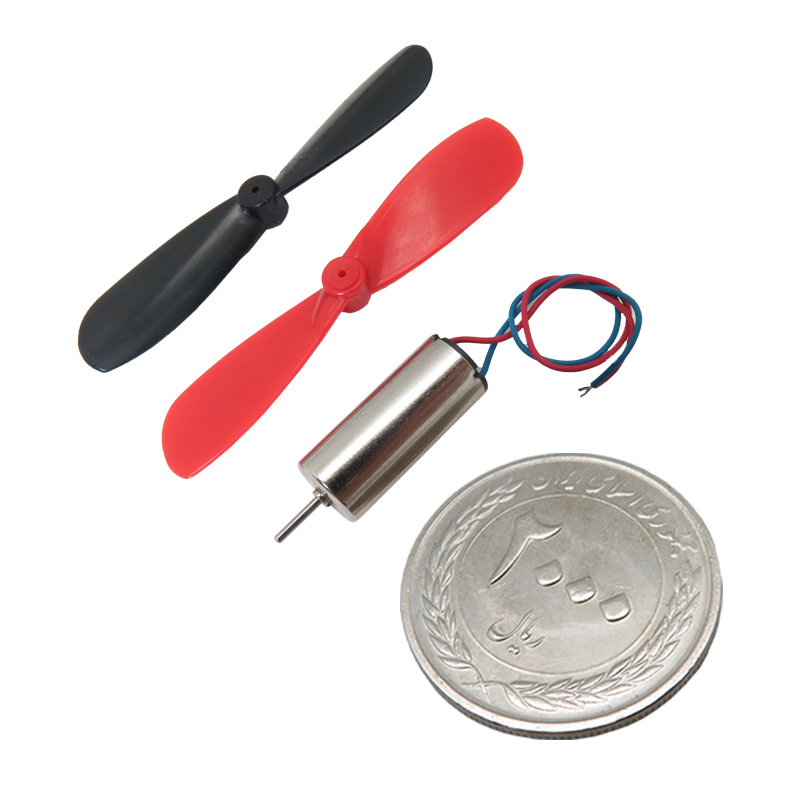87,290 تومان
در حال حاضر موجود نمی باشد
موجودی در حال ارسال به انبار
-
1000 عدد1404/06/15
علاقه مندان : 27 نفر
وضعیت : فعال
تعداد مرجوعی : 0
دنبال کنندگان : 29 نفر
قدمت : 11 سال و 9 ماه و 10 روز
وزن : 6 گرم
کل فروش : 9362 عدد
تعداد سفارش ها : 1313 سفارش
4 از 5.0 با 137 رای
ست 2 تایی موتور Coreless کوچک 7x16 میلی متری ویژه کوادکوپتر
موتور بدون هسته که در اصطلاح به آن Coreless Motor گفته می شود، یک موتور DC بدون هسته متحرک می باشد که داراری وزن کم، اندازه کوچک و شتاب بالایی می باشد. این نوع از موتورها دارای دور بسیار بالایی است که در صنعت رباتیک، پروژه های الکترونیک، ساخت پهبادهای کوچک مورد استفاده قرار می گیرد.
به این نوع موتورها، موتورهای ثابت بدون صدا نیز گفته می شود. روتور موتورهای Coreless، فاقد هسته ثابت و روتور آن یک سیم پیچ تو خالی می باشد که معمولا به شافت موتور وصل می شود.
کاربرد موتور DC بدون هسته :
- پروژه های رباتیک
- دستگاه های کوچک مانند تلفن همراه، تبلت، دستگاه های هوشمند و ...
- وسایل پزشکی و تجهیزات آزمایشگاهی مانند پمپ های کوچک
- دستگاه های اداری مانند چاپگر، کرکره، کارت خوان و...
مشخصات موتور Coreless کوچک 7x16 میلی متری :
- ابعاد: 16.5 * 7 میلی متر
- شافت خروجی: 0.8 میلی متر
- طول شافت خروجی: 4.5 میلی متر
- طول لید: حدود 50 میلی متر
- ولتاژ: 3.7 ولت
- سرعت بدون بار: 55000 دور بر دقیقه(مقدار واقعی سرعت ممکن است کمتر یا بیشتر باشد)
- جریان بدون بار: 100 ~ 60 میلی آمپر
- سرعت با بار: با پروانه ی 45 میلی متری، حدود 30000 دور بر دقیقه و جریان 1000 میلی آمپر
Description:
Coreless Dc Motor is a specialized form of DC Motors. These motors are used where small motors and rapid acceleration are needed. The difference of a coreless motor is; this type of motor has a rotor that is constructed without any iron core. They can be in cylindrical, or a disc form.
Applications:
- robot projects like small positioning systems, small wheel systems, pan-tilt systems.
- small devices like cell phones, tablets, smart devices, etc.
- medical devices and lab equipment like small pumps, for shaking, for stirring
- office devices like printers, shutters, card readers...
Advantages of Coreless Dc Motors:
- High-efficiency rates (up to 85%) (Cored Dc Motors can reach 50%)
- High acceleration and deceleration rates and good controllability
- Small and compact design
- Smooth operation
- Lighter than cored DC Motors
- Longer battery life (low electricity consumption)
- Low electrical noise
Disadvantage of a Coreless Dc Motor:
As Coreless Dc Motors usually can reach very high RPMs and has a compact structure, these motors can heat quickly. Especially when running at the full load for a short time. So it is usually advised to use a cooling system with these motors. Overheating can be an important problem especially for Coreless Micro Dc Motors. So a disadvantage of a coreless motor is, it cannot handle overloads when compared to a cored motor. The bonding adhesive that holds the windings can lose its bonding character and the motor will be broken.
Features:
Size : 7 x 16.5mm
Output shaft: 0.8 mm
Output shaft length: 4.5mm
Lead length: about 50mm
Voltage: 3.7 V
No-load speed: 55000 RPM (the actual speed may be high or low)
No-load current: 60-100mA
Load speed: with 45mm propeller, the speed is about 30,000 rpm, the current is 1000mA

